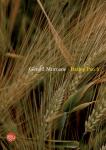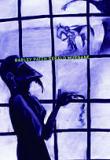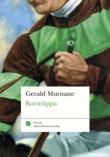AustLit
Latest Issues
AbstractHistoryArchive Description
Notes
-
Epigraph: The Turf was so complicated it went on forever. Jack Kerouac, Doctor Sax
Publication Details of Only Known VersionEarliest 2 Known Versions of
Other Formats
- Braille.
- Large print.
- Sound recording.
Works about this Work
-
What Kind of Literary History Is A History of Books?
2020
single work
criticism
— Appears in: Gerald Murnane : Another World in This One 2020; (p. 153-164)'This is one of those occasions where I feel I am wearing too many hats, and I am not sure what to do with the excess ones. This is because I am speaking of Gerald Murnane in a number of different roles – as a friend, a critic, a publisher, an editor – though I should admit that Murnane doesn’t need much editing, at least in my experience, since what I suggest as an editor tends to get rejected anyway. As he busies himself behind the bar in the room here as I talk now, I cannot be sure whether he’s listening , or whether, like the narrator at the beginning of Border Districts, he has resolved to guard his eyes, so as to be more alert to what might appear at the edges of his attention.1 But perhaps the greater discomfort for me, is to talk as both a publisher and as a critic. As a publisher there’s a sense of excitement when you’re producing a book, a kind of intimacy in the production of it, which as a critic you’re not meant to feel; you keep the book at a distance, the better to form a judgement of it. Nevertheless, when I’m preparing a book for publication I do read it critically and develop ideas about it that I think are significant, and should be conveyed to readers, particularly those who have not read Murnane before. I’m only allowed a little over one hundred words, in the blurb on the back cover, to address the reader directly, and there is not a lot one can say there, though there is a lot one wants to say. I have found, especially being here today, that much of what I wanted to say has now already been said, or is being said, as the critical discourse catches up with Murnane’s works of fiction, and his idiosyncracies as an author. And though this makes me feel proud as a publisher it makes feel humble as a critic, because it’s other people making the points that I would have liked to make, and they are making them more thoroughly than I could have done.' (Introduction(
-
Stream System, Salient Image and Feeling : Between Barley Patch and Inland
2020
single work
criticism
— Appears in: Gerald Murnane : Another World in This One 2020; (p. 63-84)'In 1988, the year that saw publication of Inland, Gerald Murnane gave a talk to an audience at La Trobe University that was subsequently published as “Stream System”.² The talk opened with a seemingly factual account of its author’s morning walk from his nearby suburban home to the Bundoora campus:
'This morning, in order to reach the place where I am now, I went a little out of my way. I took the shortest route from my house to the place that you people probably know as SOUTH ENTRY. That is to say, I walked from the front gate of of my house due west and downhill to Salt Creek then uphill and still due west from Salt Creek to the watershed between Salt Creek and a nameless creek that runs into Darebin Creek. When I reached the high ground that drains into the nameless creek, I walked north-west until I was standing about thirty metres south-east of the place that is denoted on Page 66A of Edition 18 of the Melway Street Directory of Greater Melbourne by the words STREAM SYSTEM.' (Introduction)
-
To the Untrained Eye
2020
single work
criticism
— Appears in: Gerald Murnane : Another World in This One 2020; (p. 13-28) 'My first Murnanian encounter was of a humiliatingly Bloomian stripe. On a visit to my editor’s office to discuss the second draft of what was then a slip of a manuscript, I was offered a long list of books, collections and anthologies he felt were in my interest to investigate. When the question of which of Murnane’s books I had read was raised, I confessed not only to having never read a word Murnane had written, but also to never having heard his name before. To this my editor recoiled as though I’d hocked a golly in his direction. Murnane, my editor informed me, was not only a major author in Australian letters, despite what is often referred to as his “lack of wider recognition”, but more to the point, was one of the brightest stars in my editor’s stable, and as such, my editor had every right to take my inattention to this important author as a personal and embarrassing failing on both our accounts.' (Introduction) -
y
 Grounded Visionary : The Mystic Fictions of Gerald Murnane
Oxford
:
Peter Lang
,
2019
22038132
2019
multi chapter work
criticism
Grounded Visionary : The Mystic Fictions of Gerald Murnane
Oxford
:
Peter Lang
,
2019
22038132
2019
multi chapter work
criticism
'Grounded Visionary: The Mystic Fictions of Gerald Murnane is a reading of Australian writer Gerald Murnane’s fiction in the light of what is known as the Perennial Philosophy, a philosophical tradition that positions itself as the mystical foundation of all the world’s religions and spiritual systems. The essential tenet of that philosophy is that at a fundamental level all of life is a unity―consciousness and world are the same thing―and that it is possible, if extremely difficult, for the discriminating individual mind to experience this wholeness. Murnane’s work can be seen not to take its lead from writings in this philosophical tradition but rather to resonate with many of them through Murnane’s unique artistic expression of his experience of the world. The crux of the argument is that beneath their yearnings for landscapes and love, Murnane’s narrators and chief characters are all in search of the essential unity that the Perennial Philosophy postulates.
'Taking its cue from Murnane’s self-description as a "technical writer," this book examines each of the author’s works in detail to reveal how structures and themes are seamlessly woven together to create artworks that shimmer with mystery while at the same time remaining thoroughly grounded in the actual.
'Grounded Visionary is the first full-length study of Gerald Murnane’s work to tackle head-on his underlying mystical sensibility and is also the first to deal comprehensively with the author’s complete fictional output from Tamarisk Row to Border Districts. This book will be of interest to all lovers of modern literature and will be of special interest to students of Australian literature and those concerned with the interface between art and spirituality.'
Source: Publisher's blurb.
-
What I’m Reading
2018
single work
column
— Appears in: Meanjin Online 2018;
-
The Shadows on the Patch
2009
single work
review
— Appears in: The Age , 3 October 2009; (p. 22) The Sydney Morning Herald , 17-18 October 2009; (p. 28-29)
— Review of Barley Patch 2009 single work novel -
Idiot's Delight
2009
single work
review
— Appears in: The Australian Literary Review , October vol. 4 no. 9 2009; (p. 23)
— Review of Barley Patch 2009 single work novel -
'Must I Write?'
2009
single work
review
— Appears in: Australian Book Review , October no. 315 2009; (p. 10-11)
— Review of Barley Patch 2009 single work novel -
[Review] Barley Patch
2009
single work
review
— Appears in: Bookseller + Publisher Magazine , October vol. 89 no. 3 2009; (p. 29)
— Review of Barley Patch 2009 single work novel -
Stripped Clean to the Heart
2009
single work
review
— Appears in: The Weekend Australian , 24-25 October 2009; (p. 23)
— Review of Barley Patch 2009 single work novel -
A World of His Own
2009
single work
biography
— Appears in: The Weekend Australian , 3-4 October 2009; (p. 20-21) -
Australia más cerca
2011
single work
column
— Appears in: El país , 7 May 2011; La literatura de un país hecho con partes de todo el mundo protagoniza un fenómeno global y multilateral. Escritores de prestigio cuyas obras han alcanzado un registro intelectual posmoderno. España empieza a conocer más este nuevo territorio literario. [Spain gets to know a little better the new terrain of Australian literature, which is both postmodern and transnational. - Translation] -
The Quest for the Girl from Bendigo Street
2012
single work
criticism
— Appears in: The New York Review of Books , vol. 59 no. 20 2012; -
To the Untrained Eye
2020
single work
criticism
— Appears in: Gerald Murnane : Another World in This One 2020; (p. 13-28) 'My first Murnanian encounter was of a humiliatingly Bloomian stripe. On a visit to my editor’s office to discuss the second draft of what was then a slip of a manuscript, I was offered a long list of books, collections and anthologies he felt were in my interest to investigate. When the question of which of Murnane’s books I had read was raised, I confessed not only to having never read a word Murnane had written, but also to never having heard his name before. To this my editor recoiled as though I’d hocked a golly in his direction. Murnane, my editor informed me, was not only a major author in Australian letters, despite what is often referred to as his “lack of wider recognition”, but more to the point, was one of the brightest stars in my editor’s stable, and as such, my editor had every right to take my inattention to this important author as a personal and embarrassing failing on both our accounts.' (Introduction) -
Stream System, Salient Image and Feeling : Between Barley Patch and Inland
2020
single work
criticism
— Appears in: Gerald Murnane : Another World in This One 2020; (p. 63-84)'In 1988, the year that saw publication of Inland, Gerald Murnane gave a talk to an audience at La Trobe University that was subsequently published as “Stream System”.² The talk opened with a seemingly factual account of its author’s morning walk from his nearby suburban home to the Bundoora campus:
'This morning, in order to reach the place where I am now, I went a little out of my way. I took the shortest route from my house to the place that you people probably know as SOUTH ENTRY. That is to say, I walked from the front gate of of my house due west and downhill to Salt Creek then uphill and still due west from Salt Creek to the watershed between Salt Creek and a nameless creek that runs into Darebin Creek. When I reached the high ground that drains into the nameless creek, I walked north-west until I was standing about thirty metres south-east of the place that is denoted on Page 66A of Edition 18 of the Melway Street Directory of Greater Melbourne by the words STREAM SYSTEM.' (Introduction)





